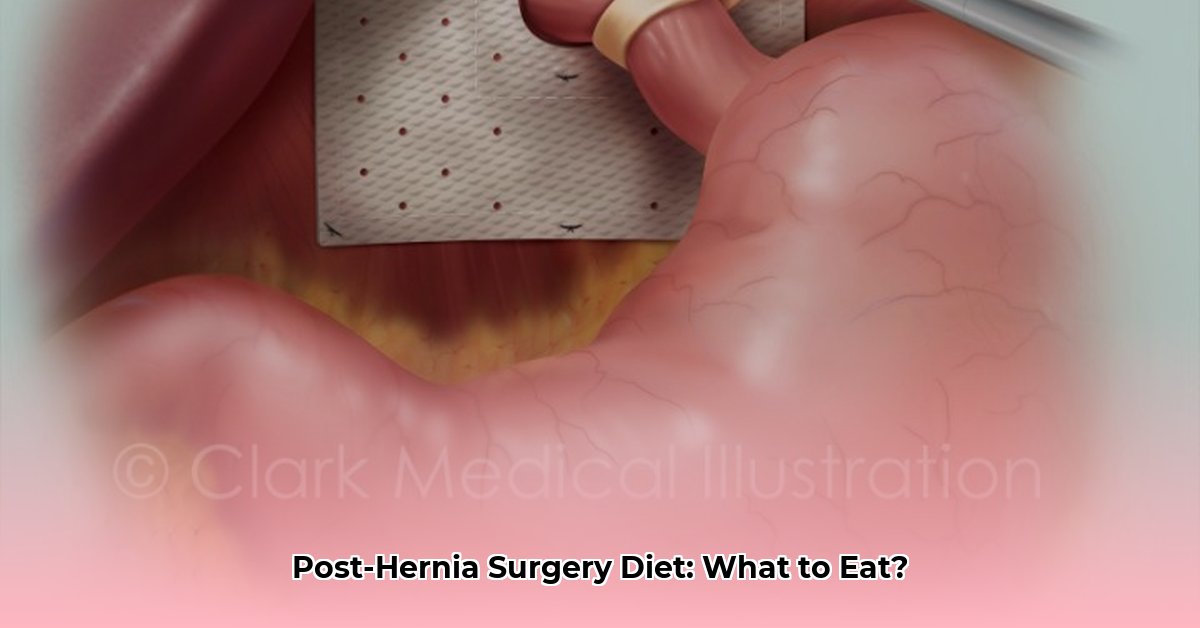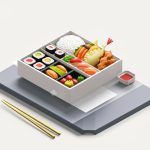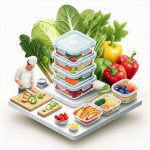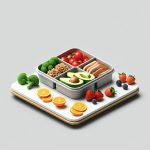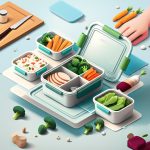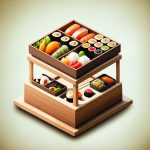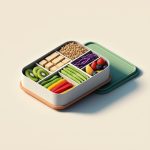Recovering from hiatus hernia surgery requires a gradual return to normal eating. This NHS-guided plan outlines the stages of your post-surgery diet, helping you minimize discomfort and promote healing.
Week 1: Clear Liquids – Gentle Start
Immediately after surgery, your digestive system needs time to recover. Clear liquids are easy to digest and won’t strain your stomach. Hydration is key during this first week.
What you CAN enjoy:
- Water: Sip regularly throughout the day.
- Clear Broths: Chicken, beef, or vegetable.
- Diluted Clear Juices (No Citrus): Apple or cranberry diluted with water.
- Ice Chips: Soothing for dry mouth or nausea.
Managing Discomfort:
- Small, Frequent Sips: Avoid large gulps.
- Contact Your GP: If nausea persists or becomes severe.
Weeks 2-3: Soft/Sloppy Foods – Expanding Your Options
As you heal, you can gradually introduce soft, easily-mashed foods that require minimal chewing. This stage provides essential nutrients while remaining gentle on your digestive system.
What you CAN enjoy:
- Cooked Cereals: Oatmeal, cream of wheat.
- Mashed/Pureed Vegetables: Carrots, peas, sweet potatoes.
- Soft Fruits: Bananas, avocados, cooked applesauce.
- Ground/Minced Meats: Chicken, fish, turkey.
- Scrambled/Poached Eggs.
- Dairy (If Tolerated): Yogurt (no chunks), cottage cheese.
What to Avoid:
- Tough Meats: Steak, pork chops.
- Raw Vegetables.
- Crunchy/Stringy Foods: Celery, nuts, seeds.
- Spicy Foods.
- Acidic Foods: Citrus fruits, tomatoes.
- Fatty Foods.
- Caffeine and Alcohol.
Sample Meal Plan (Weeks 2-3):
| Meal | Example |
|---|---|
| Breakfast | Creamy porridge, scrambled eggs, yogurt |
| Lunch | Mashed sweet potato with ground chicken |
| Dinner | Steamed cod with pureed carrots |
| Snacks | Applesauce, banana puree |
Weeks 4-5: Soft to Normal – Transitioning Back
This stage bridges the gap between soft foods and your regular diet. You can reintroduce more textures and variety, but continue listening to your body.
What you CAN enjoy:
- Cooked Vegetables: Tender and soft.
- Lean Proteins: Chicken, fish.
- Soft Fruits: Bananas, stewed apples.
- Bread and Pasta: Refined versions initially.
What to Still Avoid:
- Highly Acidic Foods: Citrus fruits, tomatoes.
- Spicy Dishes.
- Fried Foods.
- Carbonated Beverages.
- Alcohol.
Sample Meal Plan (Weeks 4-5):
| Meal | Example |
|---|---|
| Breakfast | Oatmeal with banana, scrambled eggs |
| Lunch | Chicken salad sandwich, lentil soup |
| Dinner | Baked salmon with steamed green beans |
| Snacks | Fruit (banana, melon), yogurt |
Mindful Eating: Pay attention to your body’s signals of fullness.
Week 6 Onward: Normal Healthy Eating – Long-Term Habits
You’re almost back to normal! This stage focuses on returning to a balanced diet while maintaining mindful eating habits and avoiding trigger foods.
Key Principles:
- Gradual Reintroduction: Don’t rush it.
- Smaller, Frequent Meals: Continue this practice.
- Thorough Chewing: Aid digestion and savor your food.
- Mindful Eating: Pay attention to hunger and fullness cues.
- Hydration: Water, herbal teas, diluted juice.
- Avoid Trigger Foods: Spicy, fatty, fizzy drinks, coffee, alcohol. Reintroduce with caution if at all.
- Personalized Approach: Adapt to your needs and tolerance levels.
Sample Meal Plan (Week 6+):
| Meal | Example |
|---|---|
| Breakfast | Oatmeal with berries, whole-wheat toast |
| Lunch | Chicken salad, mixed green salad |
| Dinner | Baked salmon, quinoa |
| Snacks | Greek yogurt, almonds |
Foods to Avoid (Initially and Potentially Long-Term)
Some foods may aggravate your healing digestive system. These may include:
- Acidic Foods: Citrus fruits, tomatoes, vinegar.
- Fatty/Fried Foods: Delay stomach emptying.
- Spicy Foods: Irritate the esophagus.
- Chocolate: Caffeine and fat relax the esophageal sphincter.
- Caffeinated/Carbonated Drinks: Increase stomach pressure.
- Alcohol: Relaxes esophageal sphincter, increases acid production.
- Peppermint: May relax the lower esophageal sphincter.
Potential Complications & When to Contact Your GP
Contact your GP immediately if you experience:
- Fever (101°F/38.3°C or higher).
- Severe or unmanaged pain.
- Persistent Vomiting.
- Difficulty Swallowing (persisting beyond initial recovery).
- Unexplained Weight Loss.
- Black/Bloody Stools.
Coping with Dietary Changes & Nutrient Deficiencies
Dietary changes can be challenging. Focus on the positive impact on your healing and long-term well-being. Consult a dietitian or join a support group if needed. Surgery can sometimes affect nutrient absorption. Your doctor or dietitian may suggest supplements to address potential deficiencies (e.g., iron, B12, calcium).
FAQs
(Q): Can I have milk after surgery?
(A): Yes, milk is generally allowed in the early stages, especially if you tolerate it well. Choose whole milk and consume it as part of other foods like cereal, puddings, or milkshakes. Avoid chocolate milk, as it may not be suitable initially.
(Q): Can I have bread after surgery?
(A): Not immediately after surgery. Bread should be avoided for the first few weeks until your digestion recovers sufficiently. Introduce it very gradually, and opt for a soft type such as white bread during the transition phase.
(Q): I’m experiencing heartburn after surgery. Is this normal?
(A): Some heartburn can occur post-surgery. Maintain an upright posture after eating, and avoid trigger foods. If heartburn is frequent or severe, contact your GP.
Resources
- [Your local NHS Clinical Commissioning Group (CCG)] they can provide local support and advice. This link will be specific to the user’s geographic location when converted to HTML.
- [The British Dietetic Association (BDA)]: Find registered dietitians specializing in gastrointestinal health.
This guide provides general information and does not replace professional medical advice. Consult your healthcare team for personalized guidance.
- Bento Box Trays Streamline Restaurant Meal Presentation and Transport - December 13, 2025
- Plastic Bento Boxes Face Scrutiny Over Sustainability Impacts - December 11, 2025
- Bento Tray Revolutionizes Organized Meal Transport and Presentation - December 10, 2025
